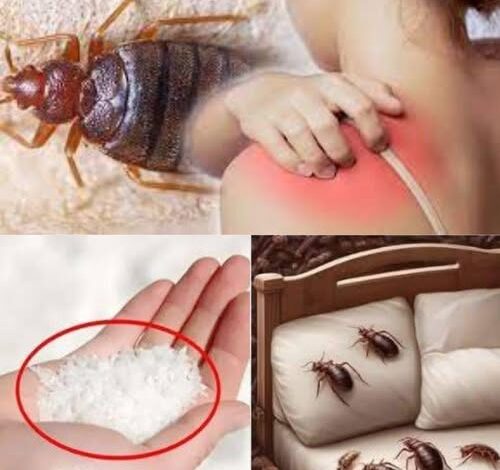Complete Bedbug Elimination Guide: Effective Home Pest Control Methods

Understanding Bedbug Infestations and Home Pest Control
Bedbugs (Cimex lectularius) represent one of the most persistent and challenging pest control problems affecting modern households. These small, reddish-brown parasitic insects measure approximately the size of an apple seed and possess flat, oval-shaped bodies that make detection extremely difficult until infestations become severe.
Despite their diminutive size, bedbugs demonstrate remarkable resilience and reproductive capabilities, making professional pest management or comprehensive DIY pest control essential for successful elimination. Understanding bedbug behavior patterns and lifecycle characteristics provides the foundation for developing effective home pest control strategies.
Bedbug Biology and Infestation Patterns
Female bedbugs demonstrate extraordinary reproductive capacity, laying between 200-500 eggs throughout their lifetime under optimal conditions. These eggs typically hatch within 6-10 days, producing nymphs that progress through five distinct developmental stages before reaching reproductive maturity.
Adult bedbugs can survive 6-12 months depending on environmental factors, with the remarkable ability to survive several months without feeding. This survival capability makes complete pest elimination extremely challenging and requires persistent, comprehensive treatment approaches for successful home pest control.
Common Bedbug Hiding Locations and Pest Detection
These nocturnal parasites prefer dark, warm locations close to their human hosts, making bedrooms the primary infestation sites. Professional pest control experts identify common hiding locations including mattresses, bed frames, headboards, and furniture crevices where bedbugs establish colonies.
Additional hiding spots include carpeted areas, window treatments, upholstered furniture, electrical outlets, and areas behind wallpaper. Understanding these preferred locations enables targeted pest control treatments and more effective elimination strategies for comprehensive home pest management.
Bedbug Transmission and Home Infestation Prevention
While bedbugs cannot fly or jump, they spread rapidly through various transmission methods that homeowners should understand for effective pest prevention. Common transmission occurs through luggage and clothing after traveling to infested locations, making travel pest prevention crucial for avoiding home infestations.
Used furniture purchases, particularly beds, couches, and wooden furniture, represent significant infestation risks. Public spaces including hotels, theaters, and public transportation also facilitate bedbug transmission, emphasizing the importance of post-travel inspection protocols for effective pest prevention.
Identifying Bedbug Infestation Warning Signs
Early pest detection significantly improves treatment success rates and reduces elimination costs. Primary infestation indicators include distinctive red, itchy bite patterns typically appearing in linear arrangements or clusters on exposed skin areas during sleep.
Additional warning signs include bloodstains on bedding from crushed insects, dark brown or black fecal spots on mattresses and furniture, and bedbug exoskeletons found in hiding locations. Severe infestations may produce musty odors caused by bedbug secretions, indicating advanced pest problems requiring immediate professional intervention.
Comprehensive Cleaning and Pest Elimination Strategies
Effective bedbug elimination begins with thorough cleaning protocols targeting all potential hiding locations. Intensive vacuuming of mattresses, bed frames, furniture, and carpeted areas removes both adult bedbugs and eggs, though immediate disposal of vacuum contents in sealed bags prevents reinfestation.
Steam cleaning treatments using temperatures above 120°F (49°C) effectively kill bedbugs and eggs on mattresses, upholstery, and other fabric surfaces. This heat treatment method provides chemical-free pest control options suitable for households with children or chemical sensitivities.
Heat Treatment and Laundry Pest Control Methods
Washing all bedding, curtains, and clothing in hot water temperatures of at least 130°F (54°C) destroys bedbugs at all lifecycle stages. Following hot water washing with high-heat drying cycles for minimum 30-minute periods ensures complete pest elimination from washable items.
Alternative heat treatment involves placing infested items in sealed plastic bags and exposing them to direct sunlight for several hours. This natural heat treatment method provides effective pest control for items unsuitable for conventional washing methods.
Natural Pest Control Remedies and Chemical-Free Solutions
Diatomaceous earth represents an effective natural pest control option that dehydrates and eliminates bedbugs through physical rather than chemical action. Applying food-grade diatomaceous earth around beds, furniture, and crevices, then vacuuming thoroughly after 24-48 hours provides chemical-free pest elimination.
Baking soda offers another natural approach by absorbing moisture and dehydrating bedbugs. Sprinkling baking soda in affected areas and vacuuming after 2-3 days supports comprehensive natural pest control strategies.
Essential oils including peppermint, tea tree, and lavender demonstrate natural repellent properties. Creating spray solutions with water and essential oils provides natural pest deterrent options for ongoing bedbug prevention protocols.
Professional Pest Control and Chemical Treatment Options
Severe infestations may require professional pest control interventions using specialized equipment and treatment protocols. Professional exterminators offer heat treatment services, fumigation options, and targeted chemical applications that exceed DIY treatment capabilities.
Chemical pest control options include pyrethroid-based sprays specifically approved for bedbug elimination, though application requires careful attention to safety protocols. Insecticide dust applications using silica gel provide long-term pest control in crevices and furniture joints.
Long-Term Pest Prevention and Home Protection Strategies
Preventing future infestations requires comprehensive home protection protocols including mattress and pillow encasements designed specifically for bedbug prevention. These protective covers eliminate hiding locations while allowing easy detection of any new pest activity.
Sealing cracks and crevices in walls, furniture, and baseboards eliminates potential hiding locations while supporting overall home pest prevention efforts. Regular inspection protocols for luggage and clothing after travel, combined with careful evaluation of second-hand furniture purchases, provide essential ongoing protection against new infestations.
Professional Pest Management and Treatment Success
Successful bedbug elimination typically requires combination approaches integrating cleaning protocols, heat treatments, natural remedies, and professional pest control services when necessary. Monitoring treatment effectiveness through regular inspections ensures complete elimination while preventing reinfestation.
Working with qualified pest control professionals provides access to advanced treatment technologies and expertise essential for addressing severe infestations or resistant bedbug populations that may not respond to standard DIY elimination methods.